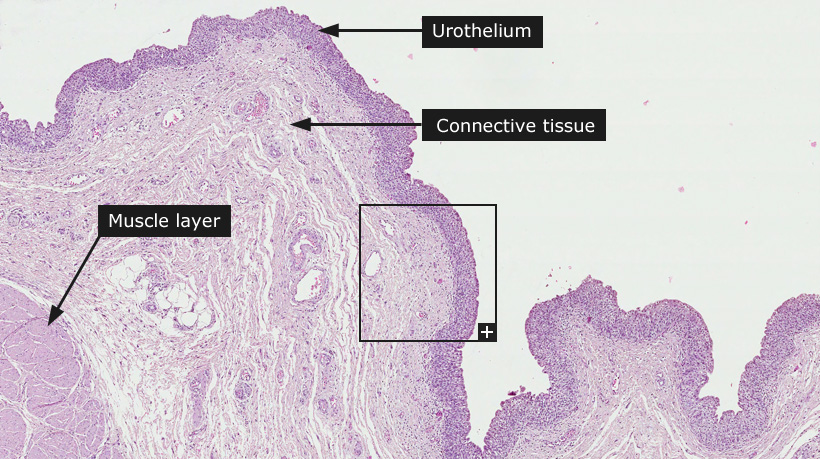DictionaryUrinary bladderUrinary bladderUrothelium 
Urinary bladderThe urinary bladder is a hollow organ designed to store and excrete urine. The layers of the bladder are the mucosa lined by the urothelium, muscularis propria and adventitia. The urothelium consists of three to seven layers of relatively flat cells, the exact number depending on bladder distension. The superficial layer is made up of a single row of large, elliptical cells having abundant eosinophilic cytoplasm that store small amounts of mucin and are called umbrella cells. The intermediate cells have a cuboidal to low columnar shape, oval nuclei with stippled chromatin, moderate amounts of cytoplasm and well-defined cell membranes. The basal layer is made up of cuboidal cells that rest on basal lamina. The lamina propria is composed of a loose connective tissue containing a vascular and lymphatic network. Smooth muscle cells are present in association with blood vessels in the mid-portion of the lamina propria. It is essential to distinguish these muscle bundles with those of the muscularis externa where the muscle bundles are thick and well organized.
Cancer: Urothelial cancer |